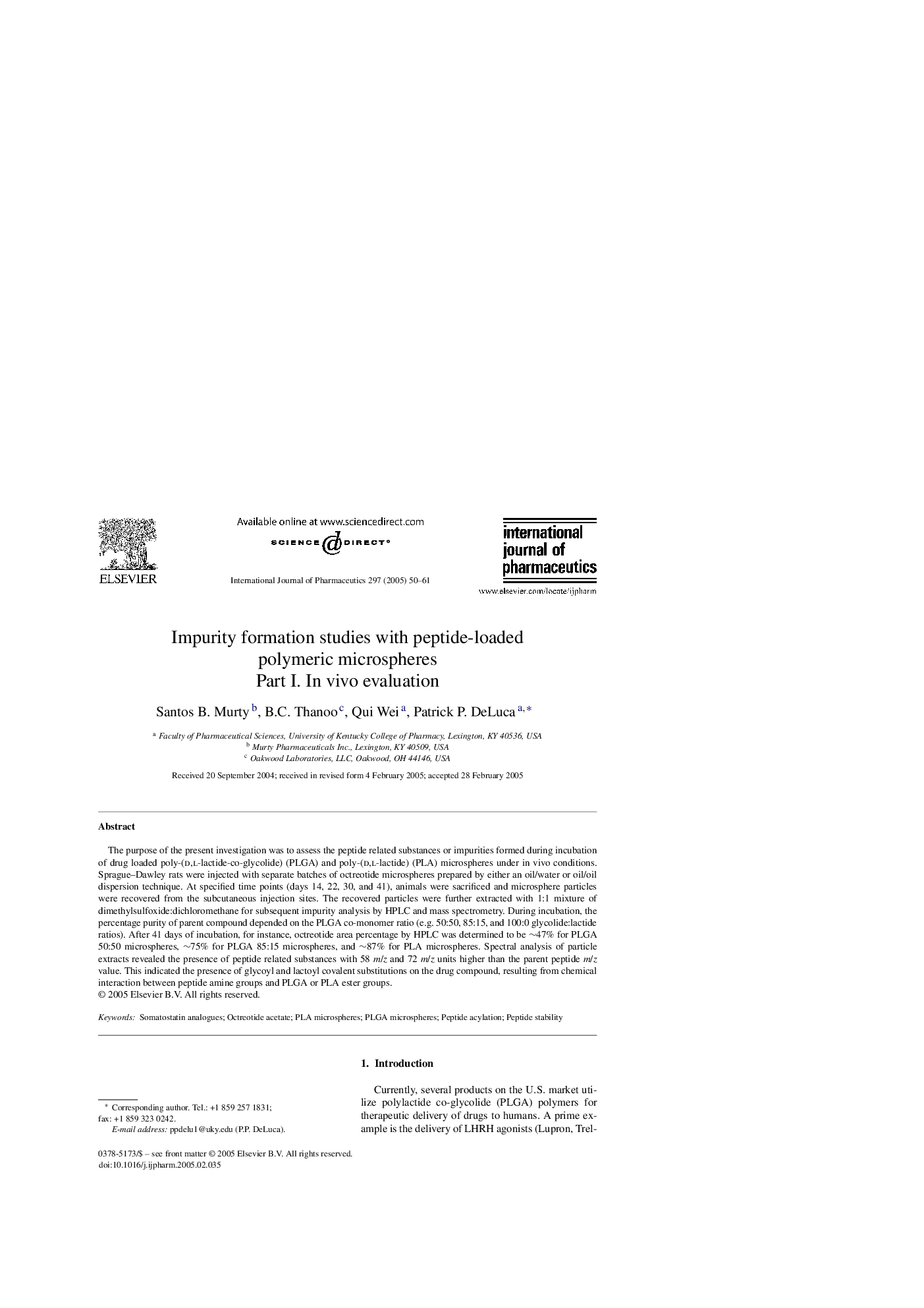| Article ID | Journal | Published Year | Pages | File Type |
|---|---|---|---|---|
| 9918764 | International Journal of Pharmaceutics | 2005 | 12 Pages |
Abstract
The purpose of the present investigation was to assess the peptide related substances or impurities formed during incubation of drug loaded poly-(d,l-lactide-co-glycolide) (PLGA) and poly-(d,l-lactide) (PLA) microspheres under in vivo conditions. Sprague-Dawley rats were injected with separate batches of octreotide microspheres prepared by either an oil/water or oil/oil dispersion technique. At specified time points (days 14, 22, 30, and 41), animals were sacrificed and microsphere particles were recovered from the subcutaneous injection sites. The recovered particles were further extracted with 1:1 mixture of dimethylsulfoxide:dichloromethane for subsequent impurity analysis by HPLC and mass spectrometry. During incubation, the percentage purity of parent compound depended on the PLGA co-monomer ratio (e.g. 50:50, 85:15, and 100:0 glycolide:lactide ratios). After 41 days of incubation, for instance, octreotide area percentage by HPLC was determined to be â¼47% for PLGA 50:50 microspheres, â¼75% for PLGA 85:15 microspheres, and â¼87% for PLA microspheres. Spectral analysis of particle extracts revealed the presence of peptide related substances with 58 m/z and 72 m/z units higher than the parent peptide m/z value. This indicated the presence of glycoyl and lactoyl covalent substitutions on the drug compound, resulting from chemical interaction between peptide amine groups and PLGA or PLA ester groups.
Related Topics
Health Sciences
Pharmacology, Toxicology and Pharmaceutical Science
Pharmaceutical Science
Authors
Santos B. Murty, B.C. Thanoo, Qui Wei, Patrick P. DeLuca,
